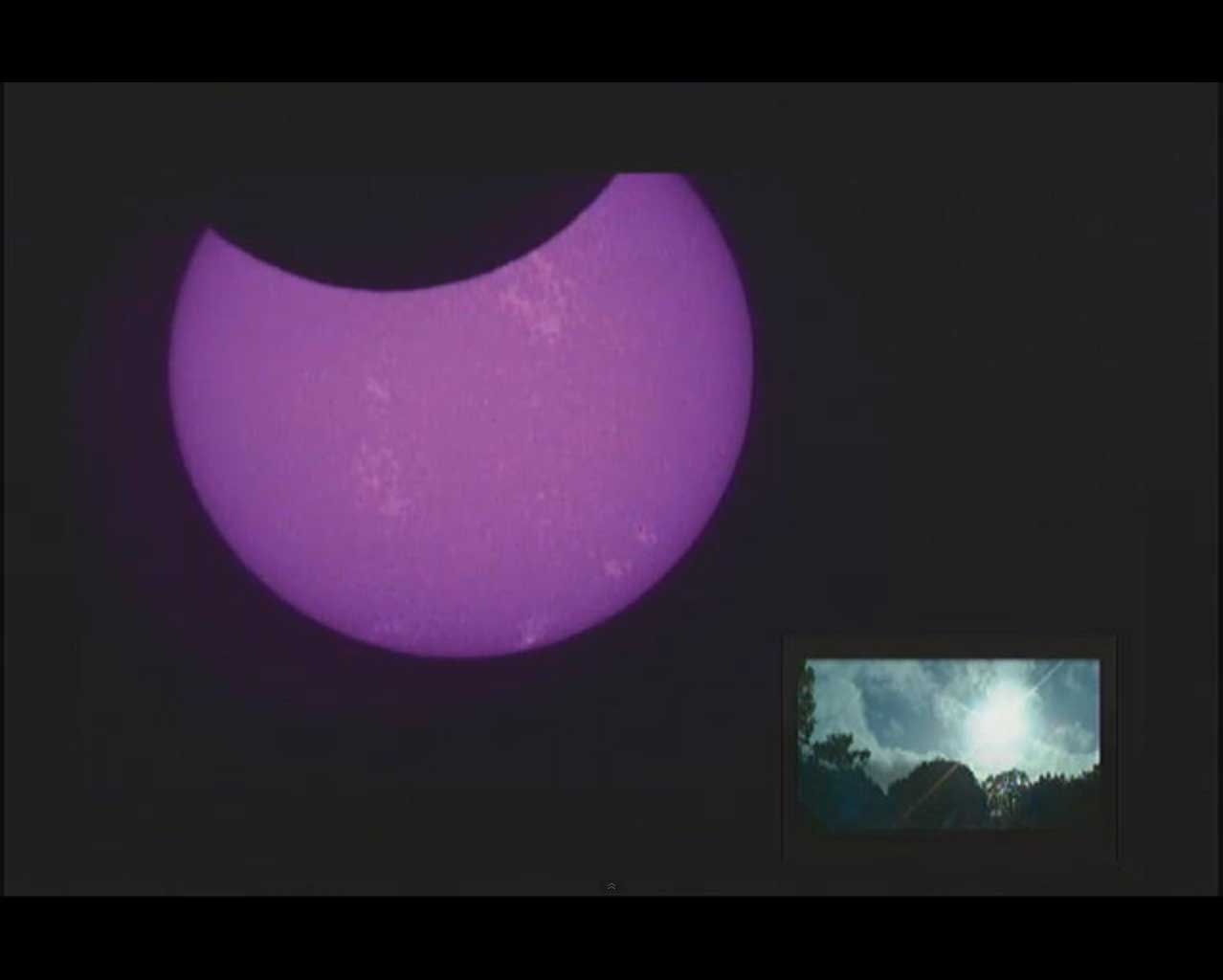'Ring of Fire' Solar Eclipse of 2013 Begins: Watch It Live

Update: See the first photos of the solar eclipse here. An initial video of the 'ring of fire' eclipse is here.
The potentially amazing solar eclipse that will turn the sun into a "ring of fire" is under way for those able to view it in person.
Weather permitting, observers in western Australia should be getting their first glimpses of the celestial show right now as the sun rises above the horizon.
If you don't happen to live in that part of the world, you can watch two live webcasts of the solar eclipse on SPACE.com. One is courtesy of the online Slooh Space Camera and the other is provided by the Coca-Cola Space Science Center.
"We have multiple feeds set-up, so weather permitting, we should have some nice looks," Slooh president Patrick Paolucci wrote in an email. "We will be on air for at least a few hours." [See Amazing Photos of an Annular Solar Eclipse in 2012]
Slooh's webcast features views from an observatory in Australia as well as expert commentary from Paolucci, Slooh outreach coordinator Paul Cox, Prescott Observatory manager Matt Francis and Astronomy Magazine contributing editor and writer Bob Berman. Live shots of the sun supplied by the Prescott Observatory in Arizona will also be on hand during the webcast.
The Coca-Cola Space Science Center's webcast also features live views from Australia. Interested skywatchers can email their questions to webcast@ccssc.org.
Get the Space.com Newsletter
Breaking space news, the latest updates on rocket launches, skywatching events and more!
An annular solar eclipse occurs when the moon passes between the Earth and the sun, casting a shadow on the planet. The moon still appears smaller than the sun in the sky, giving the eclipse its distinctive ring shape.
About 95 percent of the sun is covered during the eclipse, but the sky will not be noticeably darker. For this reason, it's important to use special protective eyewear or other methods of shielding to safely observe the eclipse in person.
The path of annularity will lead the eclipse through Australia and into Papua New Guinea. The Solomon Islands, Gilbert Islands and other parts of the Pacific Ocean also lie in the 8,264 mile (13,300 kilometer) track of the eclipse. In total, this eclipse will cover about 0.5 percent of the Earth's surface area, according to NASA officials.
Although this is the first solar eclipse of 2013, it is not the last. A rare hybrid solar eclipse — when an annular eclipse transitions into a total eclipse — will be seen in the northern Atlantic Ocean and into equatorial Africa on Nov. 3.
You can watch the webcast directly from Slooh's iPad app or the group's website: http://events.slooh.com/
You can also watch the CCSSP webcast directly from the organization's website: http://www.ccssc.org/webcast/eclipse2013.html
WARNING:Never look directly at the sun during an eclipse with a telescope or your unaided eye. Severe eye damage can result and scientists use special filters to safely view the sun.
Editor's Note: If you live in the observing area of today's solar eclipse and safely snap an amazing picture of the sun that you'd like to share for a possible story or image gallery, send photos, comments and your name and location to Managing Editor Tariq Malik at spacephotos@space.com.
Follow Miriam Kramer on Twitter and Google+. Follow us on Twitter, Facebook and Google+. Original article on SPACE.com.
Join our Space Forums to keep talking space on the latest missions, night sky and more! And if you have a news tip, correction or comment, let us know at: community@space.com.

Miriam Kramer joined Space.com as a Staff Writer in December 2012. Since then, she has floated in weightlessness on a zero-gravity flight, felt the pull of 4-Gs in a trainer aircraft and watched rockets soar into space from Florida and Virginia. She also served as Space.com's lead space entertainment reporter, and enjoys all aspects of space news, astronomy and commercial spaceflight. Miriam has also presented space stories during live interviews with Fox News and other TV and radio outlets. She originally hails from Knoxville, Tennessee where she and her family would take trips to dark spots on the outskirts of town to watch meteor showers every year. She loves to travel and one day hopes to see the northern lights in person. Miriam is currently a space reporter with Axios, writing the Axios Space newsletter. You can follow Miriam on Twitter.









